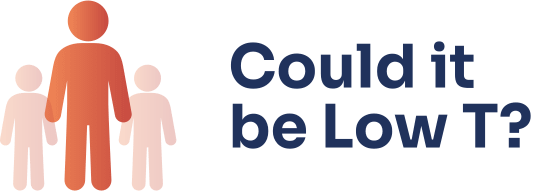Starting the Conversation
Below are some simple prompts to help you break the ice and bring up these important topics with your doctor:
Energy Levels and Mood
“I’ve noticed a significant change in my mood and energy levels lately, and it’s affecting my daily life. Could this be related to my testosterone levels?”
Weight Management Concerns
“Despite maintaining a healthy diet and exercising regularly, I’m struggling with weight gain. Is there a possibility this could be linked to my testosterone levels?”
Libido and Erectile Function
“I’ve experienced changes in my sexual desire and difficulties with erectile function, which I find concerning. Are these symptoms that could be associated with low testosterone?”
Overall Health and Well-being
“I want to be proactive about my health and address any issues that could be impacting my quality of life. Can we discuss the potential causes for these symptoms I’m experiencing? I’m curious if it has to do with my testosterone levels.”
Your health concerns are valid, and seeking help is a strength, not a weakness. Physicians are there to support you, and an open, honest conversation is the first step toward being the hero of your life again.
Take a Step Toward Improved Testosterone Levels
Step 1:
List Your Symptoms
Write down any symptoms you’ve experienced that may indicate low testosterone, such as weight gain, loss of libido, decreased muscle mass and more.
Download Our Screener to Help Check Your Symptoms
Step 2:
Make an Appointment with Your Doctor
Be upfront about your concerns regarding your testosterone levels.
Find a Physician Near You
Step 3:
Ask to Measure Your Free T, Total T and SHBG Levels
Free testosterone is just as important as – if not more important than – total testosterone and can be affected by SHBG.
Step 4:
Discuss Treatment Options
If the results of your test indicate low testosterone, speak to your doctor about testosterone replacement therapy.

Low testosterone can affect men at any age, including approximately 30% of men older than 451
What is the Difference?
Free Testosterone vs. Total Testosterone
Think of your body’s testosterone in two main categories: Free T, which is the portion that’s freely circulating and available for immediate use, and Total T, which is the total amount of testosterone present, including both free and bound forms.
Free T is crucial because it represents the active portion that your body can utilize for various functions, from muscle building to mood regulation.
The Role of Sex Hormone Binding Globulin
High levels of Sex Hormone Binding Globulin (SHBG) can lower Free T by binding to it, making it unavailable for use.
Therefore, discussing the measurement of Free T, Total T and SHBG with your doctor can provide a comprehensive view of your hormonal health.

Talk to Your Doctor About Testosterone Replacement Therapy with KYZATREX®
Testosterone replacement therapy (TRT) is a treatment to replace the testosterone you’ve lost and get your T levels back to a normal range. TRT has traditionally consisted of testosterone patches, gels, pellets, and injections. KYZATREX offers an alternative.
As a convenient oral form of testosterone therapy, KYZATREX is easy, neat, painless and discreet.
Dosing and Administration
Characteristics of Different TRTs
Which TRT would you take?


